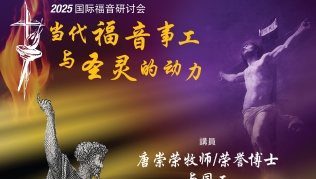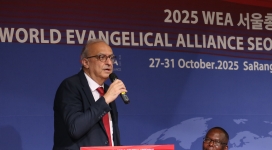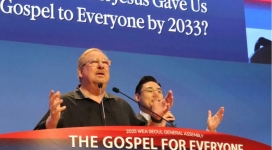The international scholarly debate over the history of Judaism and the origins of Christianity, a debate that began fifty years ago upon the discovery of the Dead Sea Scrolls along the caves of Qumran, West Bank, roused up again as archaeologists found new evidence of the caves’ original inhabitants.
The main topic of debate has centered on the original inhabitants of the caves and the area near Qumran. Most scholars believe that a monastic sect known as the Essenes – the group some say act as a link between Judaism and early Christianity – lived at the caves. The Essenes were the authors and collectors of the more than 1,000 “Dead Sea” ancient texts of which were found in the 11 caves above Qumran a half-century ago.
However, new excavations found evidence that the plateau near the caves was a plantation inhabited by ordinary farmers.
"The old consensus is not valid anymore," said Yizhar Hirschfeld, a professor of classical archaeology at Hebrew University in Jerusalem, who agreed with the latter view.
According to two other archaeologists who have been excavating at Qumran for 10 seasons, artifacts such as coins and pottery that were discovered in Qumran “lacks any uniqueness” that would support the view that the holy Essenes inhabited the land.
Meanwhile, scholars of the first camp say there were new evidence found at Qumran that support the original and traditional view. Among these scholars is Randall Price, an adjunct professor at Trinity Southwest University in New Mexico.
Price said his recent five week dig in the region yielded “new evidence to support old ideas.” Such evidence includes the careful placement of animal bones and pottery, reflecting arrangements that “make it quite clear that this was a religious ritual." Price, who is an evangelical pastor, supposed the bones were used during a communal meal held by the then-inhabitants that later became the Christian Eucharist.
Another link given by Scott was the two feet tall pot he found in Qumran; the same types of pots were found in the nearby caves that held the Dead Sea Scrolls.
As a counter argument, Hirshfeld contended “ritual baths” were not unusual occurrences during the Second Temple period 2,000 years ago. Hirshfeld concluded that the scrolls were most likely hidden in the caves, rather than written in there.
Yuval Peleg, who has been excavating at Qumran for 10 seasons with fellow archaeologist Itzhak Magen, said artifacts such as coins and pottery they have discovered indicate the ancient community at Qumran "lacks any uniqueness" that would indicate the presence of a sect of austere monks.
However, Randall Price, an adjunct professor at Trinity Southwest University in New Mexico, said his five-week dig at Qumran yielded "new evidence to support old ideas" -- that a special Jewish sect lived at Qumran.
Still others believe the area was inhabited by both the Essenes and ordinary farmers. Stephen Pfann, one of the scholars deciphering the scrolls, said that over a period of about 900 years, starting in 750 B.C., the land may have changed hands nearly a dozen times.
The Essenes, he explained, apparently lived at Qumran during two periods, starting in about 130 B.C. and ending in A.D. 66. However, they were invited to live in Jerusalem for 25 years by King Herod. During that time, ordinary farmers may have inhabited the land. Therefore, while Pfann believes most of the scrolls were written outside of Qumran, at least some were written there.





![[Exclusive Interview] Evangelist Stephen Tong exhorts the Chinese church to return to the foundations of reformed faith](https://www.gospelherald.com/media/cache/thumbnail/7/23/72340sp_273w_150h_1x_1y.png)

![[Exclusive] Rev. Dr. Richard Tin-Wo Cheung: walking between “charismatic” and “evangelical”](https://www.gospelherald.com/media/cache/thumbnail/7/23/72338sp_273w_150h_1x_1y.jpg)